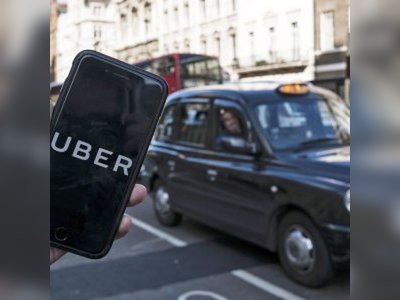Belt and Road Initiative debt: how big is it and what’s next?
Chinese investments in developing countries have raised questions about whether such projects can ever generate enough money to pay off the debt. Beijing will participate in the G20’s Debt Service Suspension Initiative, which offers relief for 77 developing nations’ debt repayments this year – on a case-by-case basis
What is the Belt and Road Initiative?
This ambitious plan involves connecting more than 70 countries on the continents of Asia, Europe and Africa via a series of rail, road and sea infrastructure projects, thus forming a “new Silk Road”. The goal for Beijing is to promote regional connections and economic integration, thereby expanding China’s economic and political influence.
The initiative was introduced by President Xi Jinping during his 2013 visit to Kazakhstan. He initially called it “One Belt, One Road”, but the project was renamed in 2016, since it comprises more than just two routes.
How is the Belt and Road Initiative funded?
Mostly through bank loans, led by China’s three government policy banks, the large state-owned banks, and sovereign wealth funds such as the Silk Road Fund. These are the main sources of such lending, along with international financial institutions such as the World Bank, Asian Development Bank, Asian Infrastructure Investment Bank and New Development Bank.
However, while loans are offered to developing countries by global lenders, there are no specific attachments to projects labelled “belt and road”, meaning there are no official breakdowns of loans being identified as belt and road borrowing.
According to data provider Refinitiv, which runs a database that tracks belt and road projects, 51.6 per cent of the plan’s projects are owned by government entities. The private sector accounted for about 30 per cent. The remaining projects are defined as public-private ventures.
What is the total value of investments and loans in the Belt and Road Initiative?
There are no official figures on the total amount of loans to, and investment in, belt and road projects, either from China or other participating countries, but there have been details announced for specific projects.
While the political stakes are high for Beijing, the central government has not offered a clear definition of what constitutes a belt and road project. Some projects are driven by local authorities to demonstrate their support for the central government and because belt and road projects open doors for new funding from banks.
As such, belt and road investment estimates vary widely among data providers, depending on their definition of a belt and road project.
According to an estimate by the Institute of International Finance (IIF), since 2013, China has agreed to US$690 billion in overseas investments and construction contracts in more than 105 countries. And by narrowing that focus down to 72 countries involved in belt and road projects, the IIF also estimated that China has funnelled a total of US$280 billion into 44 countries that are either not rated or do not have an investment-grade rating assigned by Fitch Ratings, Moody’s and Standard & Poor’s.
According to Refinitiv, in the first quarter of 2020, the value of belt and road projects, including projects with Chinese involvement, exceeded US$4 trillion for the first time. Among these, 1,590 projects – valued at US$1.9 trillion – were belt and road projects, while 1,574 other projects with a combined value of US$2.1 trillion were classified as projects with Chinese involvement.
Under Refinitiv’s belt and road methodology, projects characterised as such are those that require a signed memorandum of understanding or a joint statement of cooperation between China and the host country. The projects need to be disclosed on an official Chinese website, and if country-level agreements do not exist, by an officially recognised source in the host country.
Projects with Chinese involvement are those not officially disclosed as belt and road projects, but which still have direct Chinese participation as either the owner, consultant, contractor or financier.
What’s more, China does not disclose details of its overseas lending, which is often made through state-owned banks and companies in US dollars.
The World Bank estimated last year that around US$500 billion was invested in belt and road projects in 50 developing countries between 2013 and 2018. Of that amount, about US$300 billion was estimated to have been financed via public and publicly guaranteed debt.
How have belt and road investments changed in recent years?
Investment in belt and road projects has grown from 8.5 per cent of China’s overall foreign investment in 2016 to 13.5 per cent in 2019, according to the IIF. China is now the world’s largest creditor to developing countries, with a significant portion of its lending to these countries driven by the Belt and Road Initiative.
US-based research company Rhodium Group estimated that lending to key belt and road countries had slowed in the past few years – before the coronavirus health crisis – as a result of criticism from some recipient countries, financial difficulties back home resulting from Beijing’s initiative to reduce the high national debt load and risky lending, and a push by the Chinese government to improve lending practices.
Last month, China’s Ministry of Foreign Affairs said that about 20 per cent of belt and road projects had been “seriously affected” by the coronavirus pandemic, citing restrictions on travel and the flow of goods across borders, as well as the impact of measures to contain Covid-19, among the reasons for the delay in some projects.
Refinitiv data showed that a total of 184 new belt and road projects, with a combined value of US$137.43 billion, were announced in the first quarter this year, with the number of new projects falling 15.6 per cent compared with the same period last year, and the total value of new projects down 64.4 per cent.
Why is belt and road debt so controversial?
The plan is the cornerstone of President Xi’s foreign policy, but it has attracted a barrage of criticism from China’s trading partners over its perceived a lack of transparency, corruption, environmental impact, legal issues and labour problems.
Debt has been highlighted as a major concern because of China’s investments in developing countries that already have high levels of debt. Washington has called China’s belt and road lending a “debt trap”, saddling countries with debt that they will not be able to repay. A number of controversial Chinese investments in developing countries have raised questions about the sustainability of belt and road loans, and about whether such projects can ever generate enough money to pay off the debt.
The East Coast Rail Link, an infrastructure project to connect the South China Sea at the Thai border in the east with the strategic shipping routes of the Strait of Malacca in the west, was suspended in 2018 by the then newly elected Malaysian prime minister, Mahathir Mohamad, following his pledge to cut national debt and to renegotiate or cancel what he called “unfair” Chinese mega-projects approved by his predecessor, Najib Razak.
“We are renegotiating the terms,” Mahathir told local financial publication The Edge in May 2018 after winning the election. “The terms are very damaging to our economy.”
After several round of talks, China and Malaysia agreed in April 2019 to proceed with the infrastructure project at a lower cost of 44 billion ringgit (US$10.3 billion) – about a third less than the initial price tag of 65.5 billion ringgit.
The IIF estimated in May this year that China accounted for more than 25 per cent of the total external debt of countries eligible for the G20’s debt-suspension scheme, making China the single-largest bilateral creditor. In this group, Chinese loans to Djibouti, Ethiopia, Laos, the Maldives and Tajikistan are rated as having a “high” risk of debt distress, according to the International Monetary Fund.
London-based research firm Chatham House said in a March report, examining Chinese investments and the Belt and Road Initiative in Sri Lanka, that there was a need for both countries to consider the financial feasibility, security and disclosure in such projects to promote public trust.
“While Sri Lanka is often portrayed as having been engulfed by a Chinese debt trap as a result of public investment finance, the evidence suggests that Sri Lanka has a general debt problem rather than a specific Chinese debt problem,” the Chatham House report said. “Nonetheless, it would be prudent to reduce the risk of Sri Lanka falling into a Chinese debt trap in the future.”
What is the outlook for belt and road debt amid the pandemic?
Several countries, including Ghana, have asked China for debt relief as they tackle the Covid-19 crisis. President Xi, in a speech to the Forum on China-Africa Cooperation on June 17, indicated that Chinese financial institutions should consult African countries to work out arrangements for loans with sovereign guarantees.
Some analysts have said that the pandemic, coupled with slow domestic growth, may force China to scale back some of its belt and road projects.
China is likely to renegotiate with the borrowers on the loans, but it will face an uphill task because a large portion of the repayments in belt and road projects are expected to kick in this year, according to TS Lombard, a London-based research firm.
“As of 2019, 16 per cent of China’s overseas lending was subject to renegotiation – a figure that will dramatically increase this year as the bulk of China’s loans mature,” TS Lombard said in a note sent to the media in May. “Beijing has experience [in] renegotiating [belt and road] debt, but never with this many partners at once, and when its own position is being tested with fewer excess reserves and its own financial problems to deal with. It is likely that Beijing will cooperate with the Paris Club to assist with debt rescheduling for the poorest developing countries.”
The Paris Club currently consists of 22 creditor nations – mainly industrialised countries – but not China.
The Chinese government has said it is committed to taking part in the G20’s Debt Service Suspension Initiative, which offers temporary relief for 77 developing nations’ debt repayments that are due between May and December 2020.
While China’s participation in the G20 initiative marks the first time it has been involved in a coordinated, multilateral global debt-relief effort, Fitch Ratings said on June 24 that “the terms and impact of Chinese debt relief are likely to vary on a case-by-case basis”.
Debt relief offered by China could play a role in easing liquidity strains faced by a small subset of the countries eligible for the G20’s debt-suspension scheme, according to Fitch Ratings. However, despite the Chinese government’s promises to write off African countries’ interest-free government loans due to mature before the end of this year, such borrowings make up only a small portion of the total bilateral debt owed to China for most countries, the credit rating agency said.
A researcher with the Chinese Ministry of Commerce indicated that China might not write off all of the lending other than interest-free loans to Africa.
“The purpose of the loans was to facilitate African development, and China aims to solve debt problems through development. Simply offering write-offs would not be in accordance with African countries’ long-term development interests,” said Song Wei, an associate research fellow at the Chinese Academy of International Trade and Economic Cooperation, which operates under the commerce ministry, in an article published by the Global Times in May.
Rhodium Group noted that China could still write off part of the outstanding loan payments it is due to receive this year, but estimated that any write-off would likely be only a fraction of the US$100 billion to US$120 billion that it lent during the 2015-2016 peak lending period for belt and road loans. Depending on how each loan is structured, some of them should be maturing after about five years.
“This is an important opportunity for China to demonstrate international leadership and promote debt sustainability,” Rhodium Group said, adding that the write-off could be a “substantial but bearable haircut” for China.















